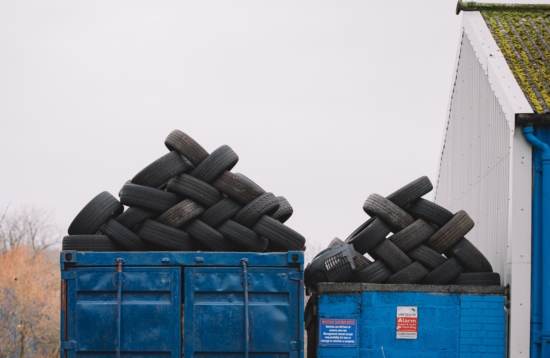Recycling no longer the Cinderella of the tyre industry – BTMA
 As the tyre market becomes more sustainable and – well – circular, can the shortcomings of the part-worn tyre market be resolved definitively? Will retreaded car tyres become mainstream again? (Photo: Ellie Burgin; Pexels)
As the tyre market becomes more sustainable and – well – circular, can the shortcomings of the part-worn tyre market be resolved definitively? Will retreaded car tyres become mainstream again? (Photo: Ellie Burgin; Pexels)
Sustainability has risen to become the leading mobility trend over the last few years, and the drive towards greater levels has permeated every major corner of the tyre business. While the focus of pro-environment efforts in the tyre business has often fallen to the tyre recovery sector, developing a Circular Economy necessitates a more holistic industrial input, from raw materials suppliers to manufacturers, from the environmental effects of the tyres in use to the material and energy it is possible to recover from end-of-life tyres. Recognising the fundamental place this theme has in our industry, this month Tyres & Accessories presents the latest news and analysis in the sustainability space, beginning with a general overview of developments in the recycling sector from the British Tyre Manufacturers Association (BTMA)’s perspective.
For decades end-of-life tyres were considered to be an inconvenient consequence of modernism. The first law for the management of scrap tyres was enacted by the American state of Minnesota in 1985. The EU introduced its landfill ban 20 years later. Academics, manufacturers and processors have been working for many years to release the potential resources in end-of-life tyres. Pyrolysis is now the favoured technology, complementing previous mechanical recovery processes.
However, only a small proportion of the residual char from the thermal process can be incorporated into new tyres without impairing the tyre’s performance. A manufacturer-led consortium of raw material specialists, BlackCycle, has overcome this problem by producing high-performance sustainable carbon black from tyre pyrolysis oil, leading to a ten-fold increase in the possible rate of incorporation in new tyres. The consortium forecasts that up to 50 per cent of Europe’s end-of-life tyres could be transformed into sustainable tyre-grade raw materials.
We now stand at the cusp of a revolution in end-of-life tyre recovery. Looking back, we can see progress away from huge stockpiles (and equally huge fires) to the present mix of material and energy recovery processes that cover most of the arisings. Not always the best possible outcome in the best possible location but a practical outworking of a policy framework established over 15 years ago.
Looking forward, improved technology will allow end-of-life tyres to be transformed into high-performance sustainable raw material suitable for volume application in new tyres. Alternative uses will include low-carbon transport fuels or feedstocks for synthetic materials. At the same time, developments in digital technologies will allow huge inroads to be made on the age-old problem of reliably knowing how many end-of-life tyres exist and where they are. Today, over a billion packets of cigarettes every year are individually tracked from factory to UK retailer. On this basis, tracking the odd 50 million tyres should be well within reach, bringing them all into compliant recovery.
This transformation is propelled by a sea-change of public opinion in response to climate change and the growing recognition that the old linear economy of make-use-throw is no longer sustainable. Despite the strong dynamic, the change can’t happen overnight. More product and process development is required to deliver the most regenerative tyre recovery outcomes. New facilities must be developed and built. Numerous aspects of government policy remain to be clarified. All these issues must be resolved before significant ‘tyre to tyre’ recovery can become a reality.
Despite these uncertainties, leading tyre manufacturers are committed to achieving greatly increased sustainable content in their tyres by 2030.
Whilst every tyre must ultimately meet its end, however innovative that may be, extending useful life is still the best and most efficient way to improve sustainability. Longer-lasting tyres, re-use and retreading all contribute to keeping tyres in service for longer. But each of these opportunities comes with its share of challenges that must be addressed in years to come. To what extent can tyre functional performance and longevity be improved at the same time? Can the shortcomings of the part-worn tyre market be resolved definitively? Will retreaded car tyres become mainstream again? Answers to some of these questions are gradually taking shape. Others remain firmly in the future.
One thing is for sure: after decades of gradual evolution, the tyre industry has entered a period of rapid and unprecedented change impacting every stage of the tyre’s lifecycle. The transformation of the tyre recycling sector will be an important part of this revolution.


 SEPA
SEPA

Comments